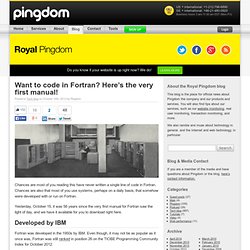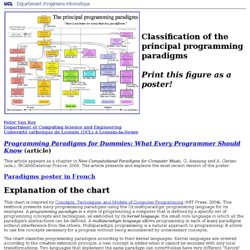

Category:Programming Tasks. Programming tasks are problems that may be solved through programming.

When such a task is defined, Rosetta Code users are encouraged to solve them using as many different languages as they know. The end goal is to demonstrate how the same task is accomplished in different languages. These are the Programming Tasks that have been defined and solved. Feel free to add solutions in languages not already included.
The Category:Simple is a small subset with only "really simple" tasks, like "Hello World", and demonstrations of basic language-features. The Category:Draft Programming Tasks is a list of tasks, some of which are just awaiting more implementations before they can be promoted to tasks. Read the guidelines on creating new tasks. The following 871 pages are in this category, out of 871 total. 4 Ways to Pick Your First Programming Language. If you haven’t picked your first programming language, the programming world is your oyster.

Yet with evangelists for every language telling you their language is the best, choosing one to start with can be incredibly overwhelming. We’ve looked at the data for the top ten programming languages in the US (based on IEEE Spectrum data) to help you pick the best language to start with based on your priorities in lifestyle, location, and career potential. Python is a popular, well-paid language, being versatile enough to be used in many different applications, while Javascript is used widely across the country, and can be a good choice if you don’t want to relocate for a job. Although some newer programming languages, such as Swift, are not included, you shouldn’t discount the growth of their popularity.
Career opportunities in iOS development using Swift, similar to Android development using Java, will increase as the field of mobile app development continues to expand. C++ Reading Guide - Google Presentationer. Java SE Downloads.
Haskell programming language. Python programming language. Want to code in Fortran? Here's the very first manual! Posted in Tech blog on October 16th, 2012 by Pingdom Chances are most of you reading this have never written a single line of code in Fortran.

Chances are also that most of you use systems, perhaps on a daily basis, that somehow were developed with or run on Fortran. Yesterday, October 15, it was 56 years since the very first manual for Fortran saw the light of day, and we have it available for you to download right here. Developed by IBM Fortran was developed in the 1950s by IBM. In fact, fairly recently, Fortran was called “the ideal HPC programming language”, where HPC stands for high-performance computing. The first Fortran manual Fortran was initially developed as an alternative to assembly language for IBM’s 704 mainframe computer, pictured below. The Programmer’s Reference Manual for Fortran, dated October 15, 1956 (click on the cover below to get the PDF) was written by the Applied Science Division and Programming Research Department at IBM. Classification of the principal programming paradigms. This article appears as a chapter in , G.

Assayag and A. Gerzso (eds.), IRCAM/Delatour France, 2009. The article presents and explains the most recent version of the poster. This chart is inspired by Concepts, Techniques, and Models of Computer Programming (MIT Press, 2004). This textbook presents many programming paradigms using the Oz multiparadigm programming language for its examples. The chart classifies programming paradigms according to their kernel languages. When a language is mentioned under a paradigm, it means that part of the language is intended (by its designers) to support the paradigm without interference from other paradigms. State is the ability to remember information, or more precisely, to store a sequence of values in time.
Axes that are orthogonal to this chart are typing, aspects, and domain-specificity.